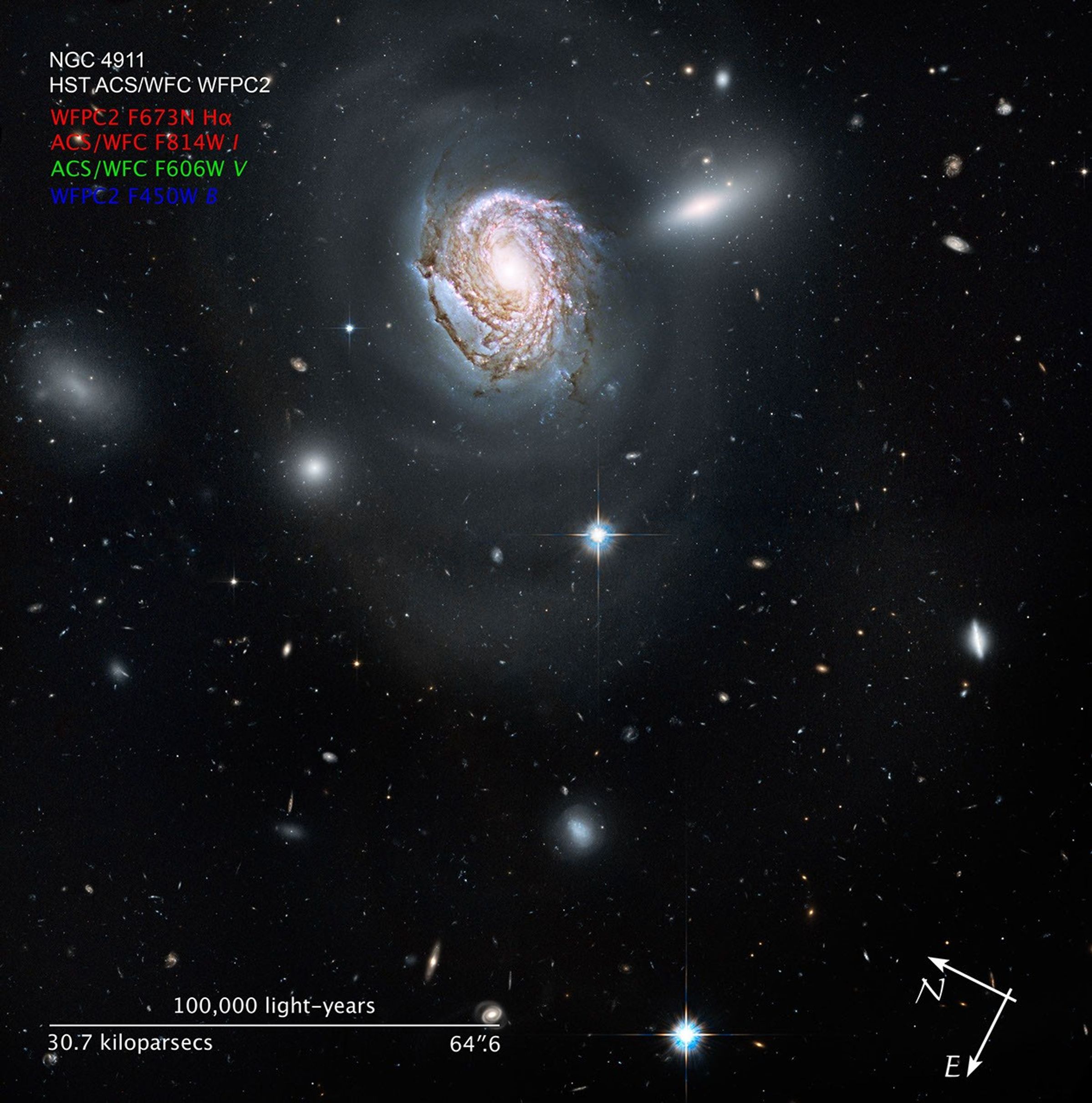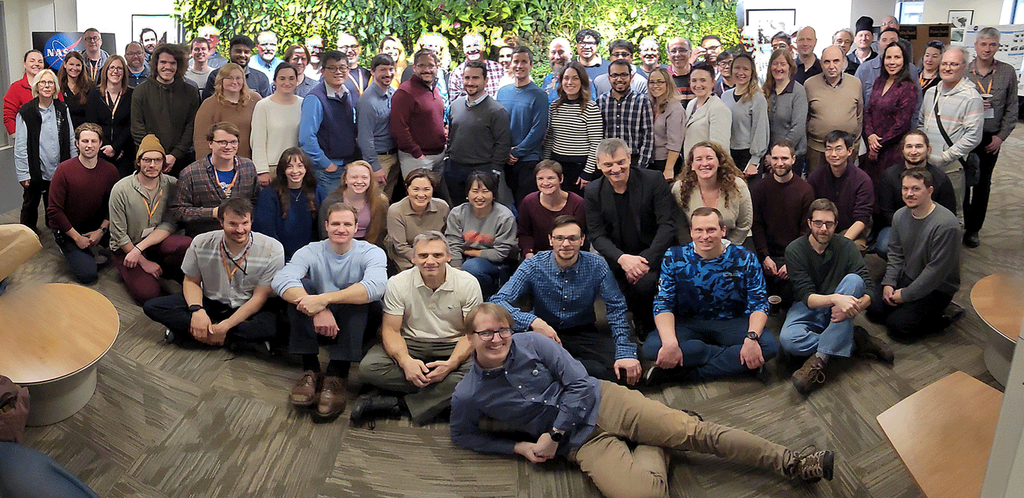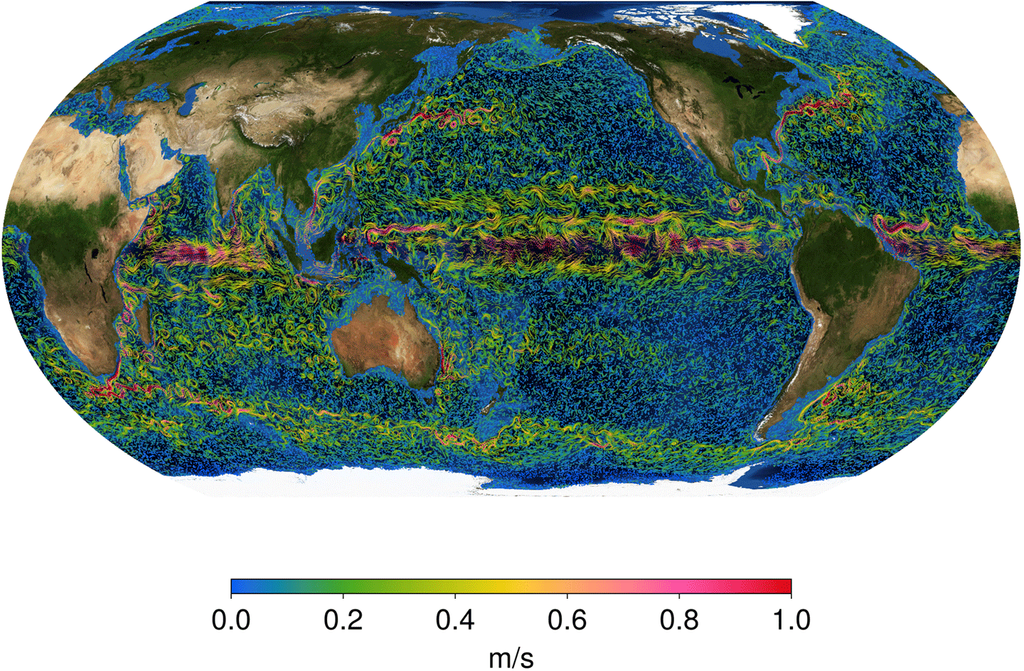1 min read
Compass and Scale Image for NGC 4911

About the Object
- R.A. PositionR.A. PositionRight ascension – analogous to longitude – is one component of an object's position.13h 0m 56.05s
- Dec. PositionDec. PositionDeclination – analogous to latitude – is one component of an object's position.27° 47' 27.12"
- ConstellationConstellationOne of 88 recognized regions of the celestial sphere in which the object appears.Coma Berenices
- DistanceDistanceThe physical distance from Earth to the astronomical object. Distances within our solar system are usually measured in Astronomical Units (AU). Distances between stars are usually measured in light-years. Interstellar distances can also be measured in parsecs.320 million light-years (100 million parsecs)
- DimensionsDimensionsThe physical size of the object or the apparent angle it subtends on the sky.The image is roughly 2.5 arcminutes (230,000 light-years or 72,000 parsecs) wide.
About the Data
- Data DescriptionData DescriptionProposal: A description of the observations, their scientific justification, and the links to the data available in the science archive.
Science Team: The astronomers who planned the observations and analyzed the data. "PI" refers to the Principal Investigator.The image was created from Hubble data from proposals 10842: K. Cook (Lawrence Livermore National Laboratory), M. Gregg (University of California, Davis), L. Macri (National Optical Astronomy Observatories, AURA), J. Mould (University of Melbourne), P. Stetson (Dominion Astrophysical Observatory), and D. Welch (McMaster University); and 11956: K. Noll, Z. Levay, L. Frattare, C. Christian, F. Hamilton, and H. Bond (Hubble Heritage Team/STScI). - InstrumentInstrumentThe science instrument used to produce the data.HST>ACS/WFC and HST>WFPC2
- Exposure DatesExposure DatesThe date(s) that the telescope made its observations and the total exposure time.December 2006 – January 2007 and January 2009 – February 2009, Exposure Time: 28 hours
- FiltersFiltersThe camera filters that were used in the science observations.F450W (B), F606W (V), F673N (redshifted H-alpha), and F814W (I)
- Object NameObject NameA name or catalog number that astronomers use to identify an astronomical object.NGC 4911
- Object DescriptionObject DescriptionThe type of astronomical object.Spiral Galaxy
- Release DateAugust 10, 2010
- Science ReleaseAn “Island Universe” in the Coma Cluster
- Credit

The image is a composite of separate exposures made by the ACS and WFPC2 instruments on the Hubble Space Telescope. Four filters were used to sample broad and narrow wavelength ranges. The color results from assigning different hues (colors) to each monochromatic image. In this case, the assigned colors are: F450W (B) F606W (V) F673N (redshifted H-alpha) + F814W (I)

Related Images & Videos

Spiral Galaxy NGC 4911 in the Coma Cluster
A long-exposure Hubble Space Telescope image shows a majestic face-on spiral galaxy located deep within the Coma Cluster of galaxies, which lies 320 million light-years away in the northern constellation Coma Berenices. The galaxy, known as NGC 4911, contains rich lanes of dust...
Share
Details
Claire Andreoli
NASA’s Goddard Space Flight Center
Greenbelt, Maryland
claire.andreoli@nasa.gov



































